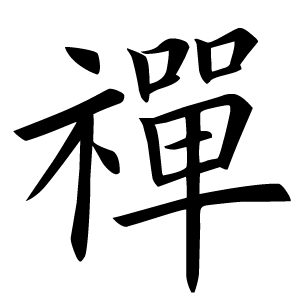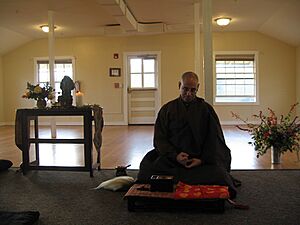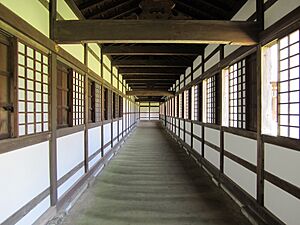Zen facts for kids
|
Basic terms |
|
|
People |
|
|
Schools |
|
|
Practices |
|
|
study Dharma |
|
Zen is a special type of Mahayana Buddhism that started in China. Buddhism itself came to China from India, brought by a person named Bodhidharma. Zen grew and became popular in China around the 6th century. From China, it then spread to other countries like Vietnam, Korea, and Japan.
The word "Zen" comes from Japanese. It is a translation of the Chinese word "Chán," which means "meditation."
Zen uses meditation to help people understand things beyond just thinking. The main goal in Zen is to reach satori. This Japanese word means "enlightenment" or a sudden deep understanding. Zen practice also includes using special riddles called Koans. Koans are designed to help people think in new ways, not just with everyday logic. A traditional place to learn Zen in Japan is a Zen monastery.
Contents
How Zen Spread Around the World
Japanese Zen teachers like D. T. Suzuki helped make Zen known in the West. Suzuki spent more than 50 years writing books in English about Zen. In the 1960s, people in California like Aldous Huxley and Alan Watts also helped share Zen ideas. From there, Zen spread to many parts of the western world.
Today, Zen is well-known outside of Japan and China. There are many Zen centers in the United States and Europe.
Zen and Design Styles
Zen is also connected to certain design styles, like Minimalism. This style focuses on simplicity and using only what is needed. The beautiful Japanese gardens at Zen monasteries in Japan are a good example of this style. These are often called Zen rock gardens. While they show Zen's simple style, they are not a direct part of Zen teachings.
Related pages
- Criticism of Buddhism
- Zen at War
Images for kids
-
Two grandmasters of the Shaolin Temple of Chinese Chan, Shi DeRu and Shi DeYang
-
Hakuin Ekaku, Hotei in a Boat, Yale University Art Gallery
-
A Dharma talk by Seon nun Daehaeng Kun Sunim, Hanmaum Seon Center, South Korea
-
Archaeologist Aurel Stein's 1907 view of Mogao Cave 16, with altar and sutra scrolls
-
Huike Offering His Arm to Bodhidharma, Sesshū Tōyō (1496).
-
Thích Nhất Hạnh leading a namo avalokiteshvaraya chanting session with monastics from his Order of Interbeing, Germany 2010
-
Sojiji Temple, of the Soto Zen school, Tsurumi-ku, Yokohama, Japan
See also
 In Spanish: Zen para niños
In Spanish: Zen para niños





















